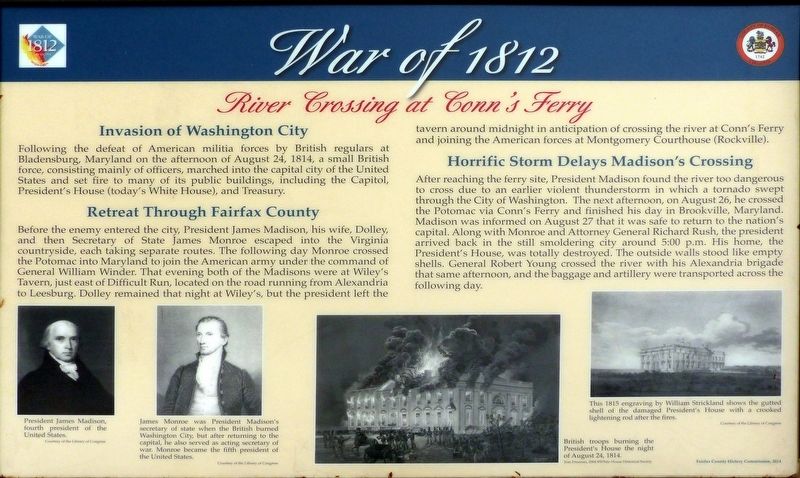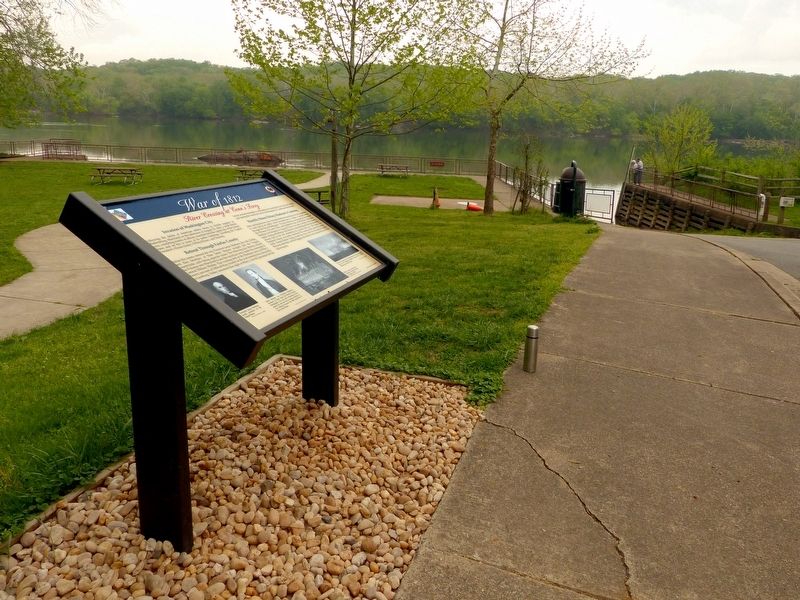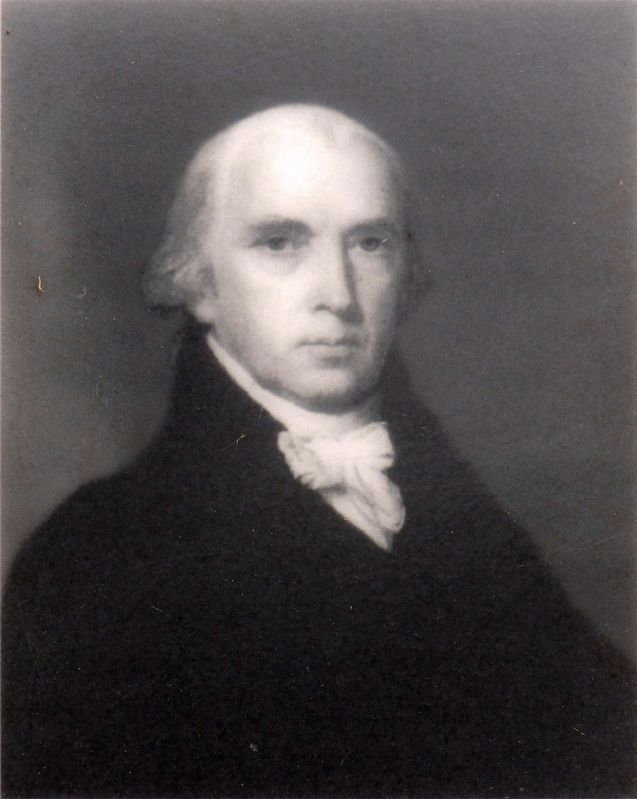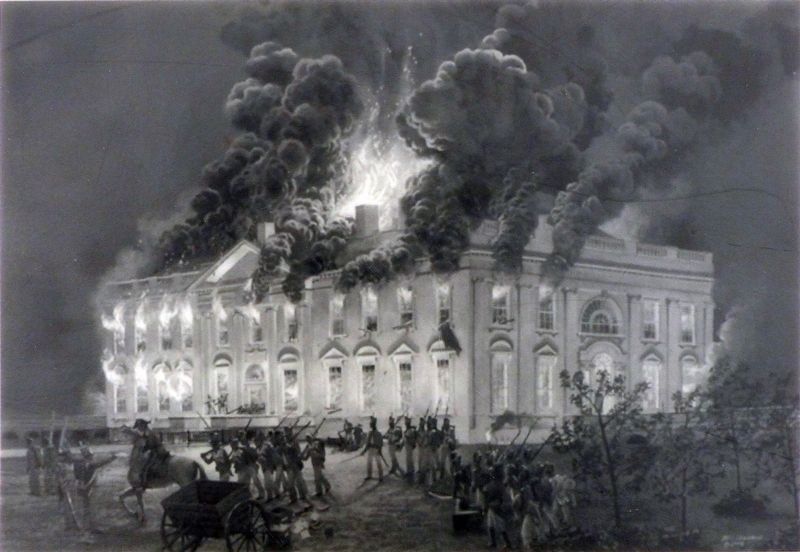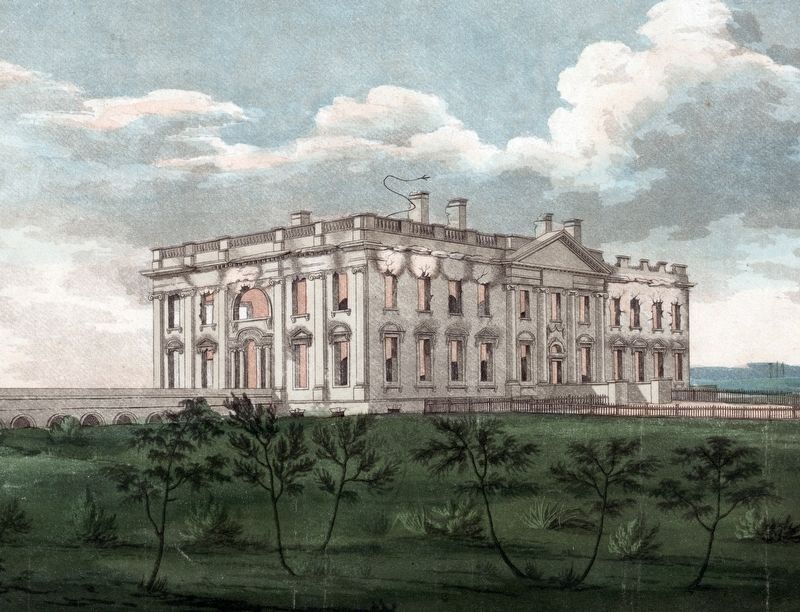Great Falls in Fairfax County, Virginia — The American South (Mid-Atlantic)
River Crossing at Conn's Ferry
War of 1812
Invasion of Washington City
Following the defeat of American militia forces by British regulars at Bladensburg, Maryland on the afternoon of August 24, 1814, a small British force, consisting mainly of officers, marched into the capital city of the United States and set fire to many of its public buildings, including the Capitol, President's House (today's White House), and Treasury.
Retreat Through Fairfax County
Before the enemy entered the city, President James Madison, his wife, Dolley, and then Secretary of State James Monroe escaped into the Virginia countryside, each taking separate routes. The following day Monroe crossed the Potomac into Maryland to join the American army under the command of General William Winder. That evening both of the Madisons were at Wiley's Tavern, just east of Difficult Run, located on the road running from Alexandria to Leesburg. Dolley remained that night at Wiley's, but the president left the tavern around midnight in anticipation of crossing the river at Conn's Ferry and joining the American forces at Montgomery Courthouse (Rockville).
Horrific Storm Delays Madison's Crossing
After reaching the ferry site, President Madison found the river too dangerous to cross due to an earlier violent thunderstorm in which a tornado swept through the City of Washington. The next afternoon, on August 26, he crossed the Potomac via Conn's Ferry and finished his day in Brookville, Maryland. Madison was informed on August 27 that it was safe to return to the nation's capital. Along with Monroe and Attorney General Richard Rush, the president arrived back in the still smoldering city around 5:00 p.m. His home, the President's House, was totally destroyed. The outside walls stood like empty shells. General Robert Young crossed the river with his Alexandria brigade that same afternoon, and the baggage and artillery were transported across the following day.
Erected 2016 by the Fairfax County History Commission.
Topics and series. This historical marker is listed in this topic list: War of 1812. In addition, it is included in the Former U.S. Presidents: #04 James Madison, and the Former U.S. Presidents: #05 James Monroe series lists. A significant historical date for this entry is August 26, 1814.
Location. 39° 1.103′ N, 77° 14.746′ W. Marker is in Great Falls, Virginia, in Fairfax County. Marker is on Potomac Hills Street, 0.6 miles east of Jeffery Road, on the left when traveling east. At Riverbend Park. Touch for map. Marker is at or near this postal address: 8808 Potomac Hills Street, Great Falls VA 22066, United States of America. Touch for directions.
Other nearby markers. At least 8 other markers are within 2 miles of this marker, measured as the crow flies. Potomac Connections (here, next to this marker); American Indians of the Potomac River (within shouting distance of this marker); Welcome to Great Falls (approx. 1.2 miles away in Maryland); Washington Aqueduct (approx. 1.2 miles away in Maryland); Great Falls Tavern (approx. 1.3 miles away in Maryland); a different marker also named Great Falls Tavern (approx. 1.3 miles away in Maryland); Creating a National Park (approx. 1.3 miles away in Maryland); A Geologic Barrier (approx. 1.4 miles away in Maryland). Touch for a list and map of all markers in Great Falls.
Also see . . . Conn's Ferry. Fairfax County, Virginia Late-18th to Early-19th Century by Debbie Robison January 3, 2010. (Submitted on April 22, 2017, by Allen C. Browne of Silver Spring, Maryland.)
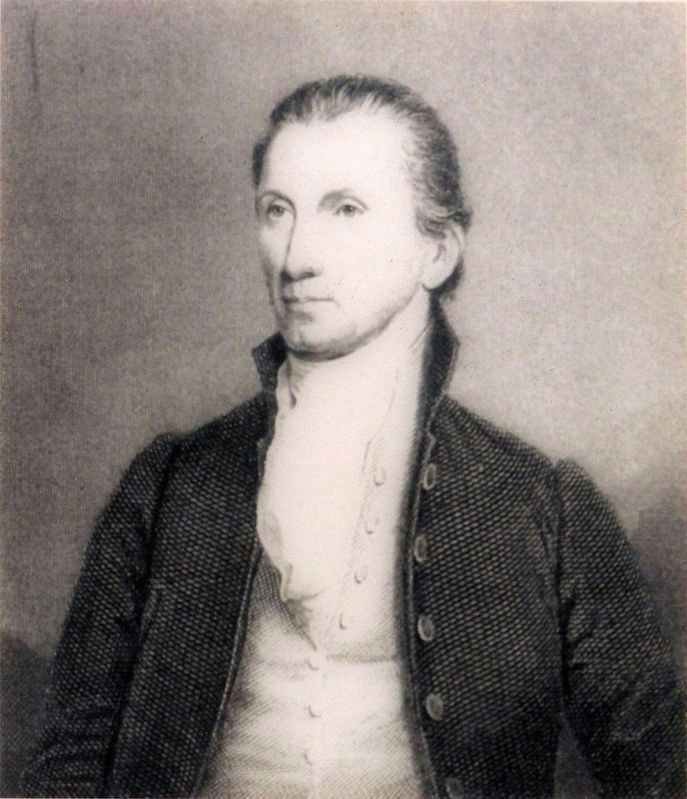
Photographed By Allen C. Browne, April 21, 2017
4. James Monroe
James Monroe was president Madison's secretary of state when the British burned Washington, City, but after returning to the capital, he also served as acting secretary of war. Monroe became the fifth president of the United States. Close-up of image on marker
Credits. This page was last revised on July 7, 2021. It was originally submitted on April 22, 2017, by Allen C. Browne of Silver Spring, Maryland. This page has been viewed 596 times since then and 189 times this year. Photos: 1, 2, 3, 4, 5, 6. submitted on April 22, 2017, by Allen C. Browne of Silver Spring, Maryland. • Bernard Fisher was the editor who published this page.
